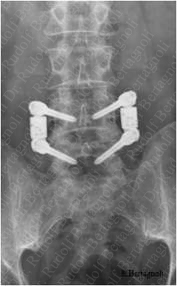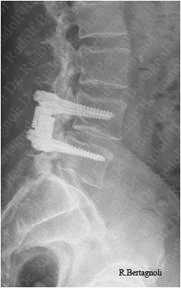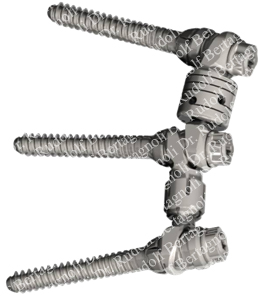Dynamic Stabilization System: Indications
- Degenerative Scoliosis
- Lumbar Stenosis
- Nerve Compression
- Spondylolisthesis
- Spine Journal Article
Dynamic Stabilization System: Device



DSS with motion coupler | DSS with fusion coupler | DSS w/ fusion & motion couplers
Dynamic Stabilization System: Surgery
Dynamic Stabilization System uses special rods and screws to stabilize the spine, sometimes joining an artificial disc replacement (ADR) surgery and a 360 fusion segment. DSS is very unique and affective in this ability to join motion and fused levels. It is performed in the lumbar spine, posteriorly, thus avoiding the riskier anterior approach of fusion and ADR surgeries. In the early days of modern spine surgery Dynamic Stabilization System was used exclusively in conjunction with fusion. The lower couples in the photo shows the configuration, when used with fusion.
Dynamic Stabilization System: Surgery Risks
All surgery carries risks from anesthesia, blood clots and infections. If complications from these risks arise, they most often can be successfully treated. The physical condition of the patient (such as obesity and diabetes) can also add risk to surgery.
Dynamic Stabilization System: Surgery Long-Term Outlook
The appropriate surgical procedure properly executed will provide long-term relief for the degenerated conditions treated. However, if the condition was allowed to continue too long and the nerves have become damaged, there may be some remaining pain or numbness or no improvement. Problems in other areas of the spine may appear at a later time.
Dynamic Stabilization System
